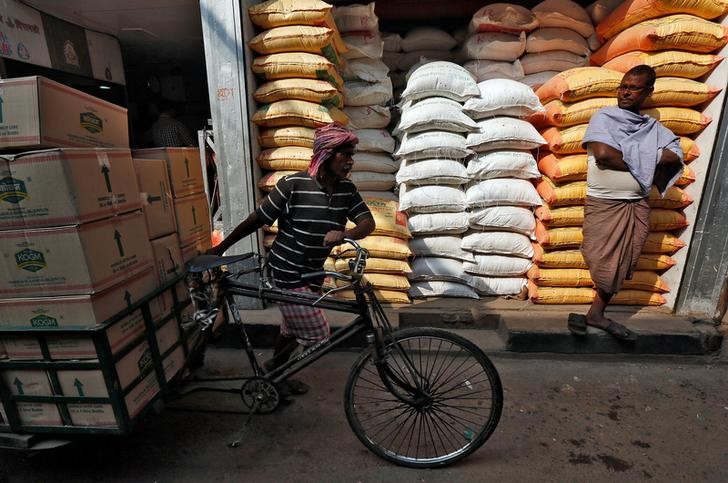BENGALURU (Reuters) - India's retail inflation rate rose to 3.99% in September, driven by higher food prices, the government said on Monday, close to the central bank's 4% medium-term inflation target.
Annual retail inflation in September was much higher compared with 3.21% in the previous month, and analysts' forecasts.
Analysts polled by Reuters had forecast a retail inflation rate of 3.70% for September.
RUPA REGE-NITSURE, GROUP CHIEF ECONOMIST, L&T FINANCIAL SERVICES, MUMBAI
"While the CPI print looks higher at 3.99%, it is entirely on the back of sharp spikes in the prices of vegetables, meat and fish, and pulses."
"Core inflation, which is a proxy for demand conditions has collapsed to 4.01%. On a year-on-year basis, it has come off by 181 bps. WPI core has already become negative. Prices of perishables like vegetables and meat will get normalized as soon as monsoon-related transport disruption is over."
"Pulses too may not pose any risk, as conditions for Rabi pulses are highly favorable due to healthy water reserves. The RBI will pay close attention to weak IIP print and demand slowdown."
"A possibility of rate-cut certainly exists, but its magnitude will depend on how HFIs behave in Q3, FY20."
GARIMA KAPOOR, ECONOMIST AND VICE-PRESIDENT, ELARA CAPITAL, MUMBAI
"The recent increase in headline CPI print has been on account of firming up of food inflation, especially in urban areas."
"Arrival of Kharif harvest and prospect of a good Rabi crop owing to comfortable water table in reservoirs means that food prices are expected to cool from November onwards, helping inflation to trend back to RBI's (Reserve Bank of India) projected levels and providing room for the RBI to cut rates. We expect the MPC (Monetary Policy Committee) to cut policy repo rate by another 50 bps until FY20-end with a 25 bps cut in December."
"All high frequency indicators of demand indicate soft demand conditions."
"While a low stable inflation is generally good, there is an urgent need for some inflation in the food economy that would help improve terms of trade of the rural economy, thereby supporting demand."
